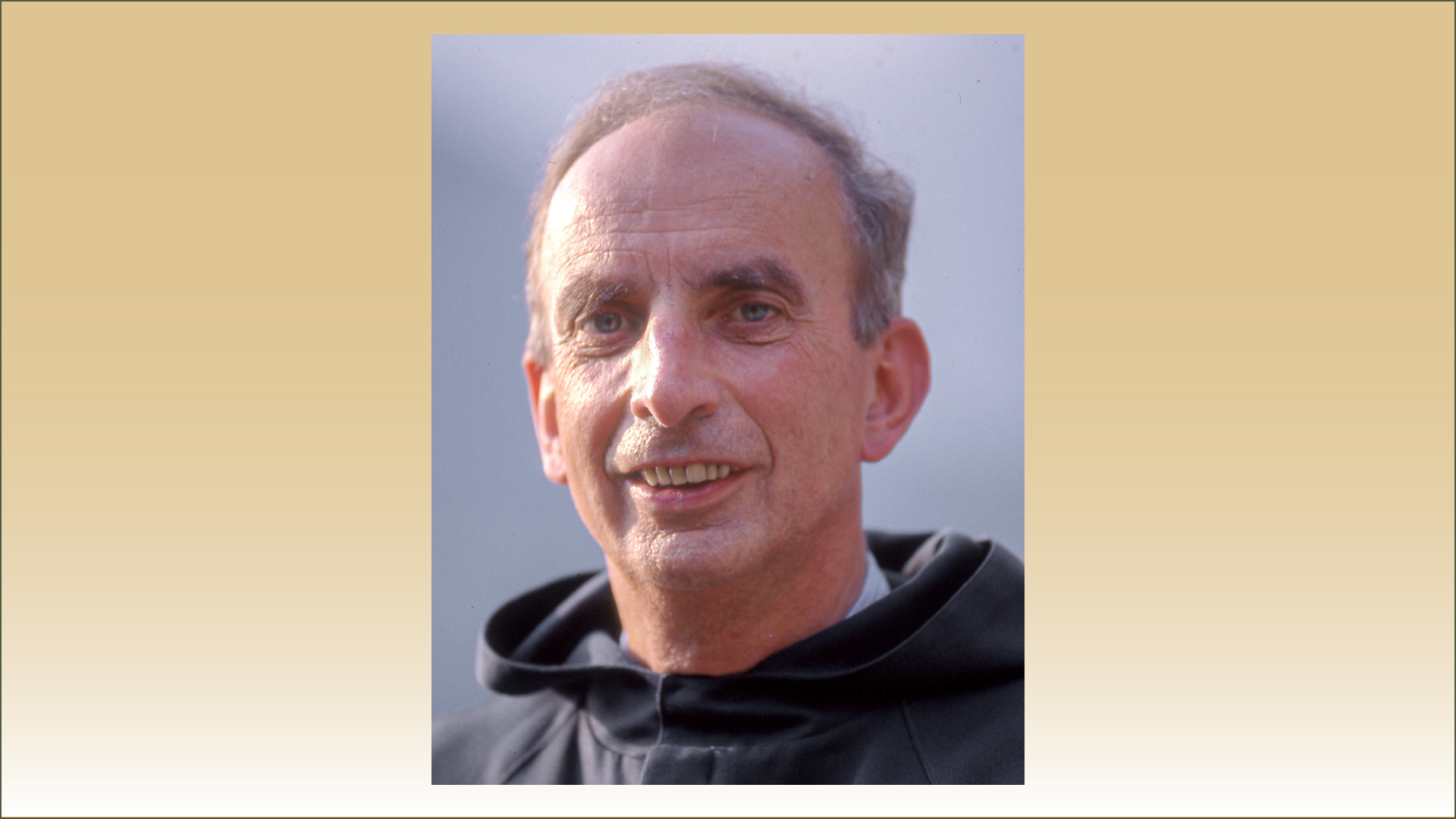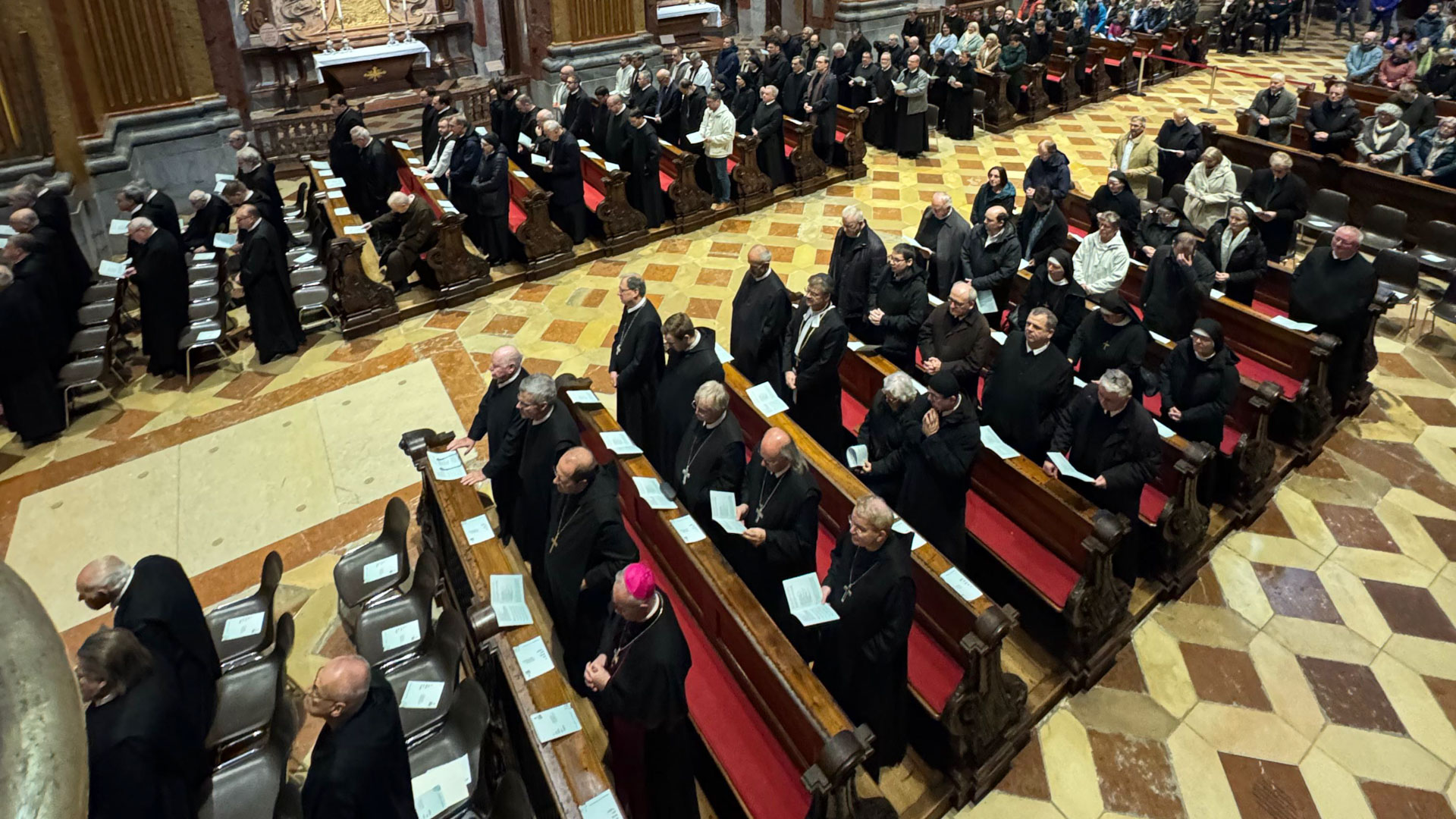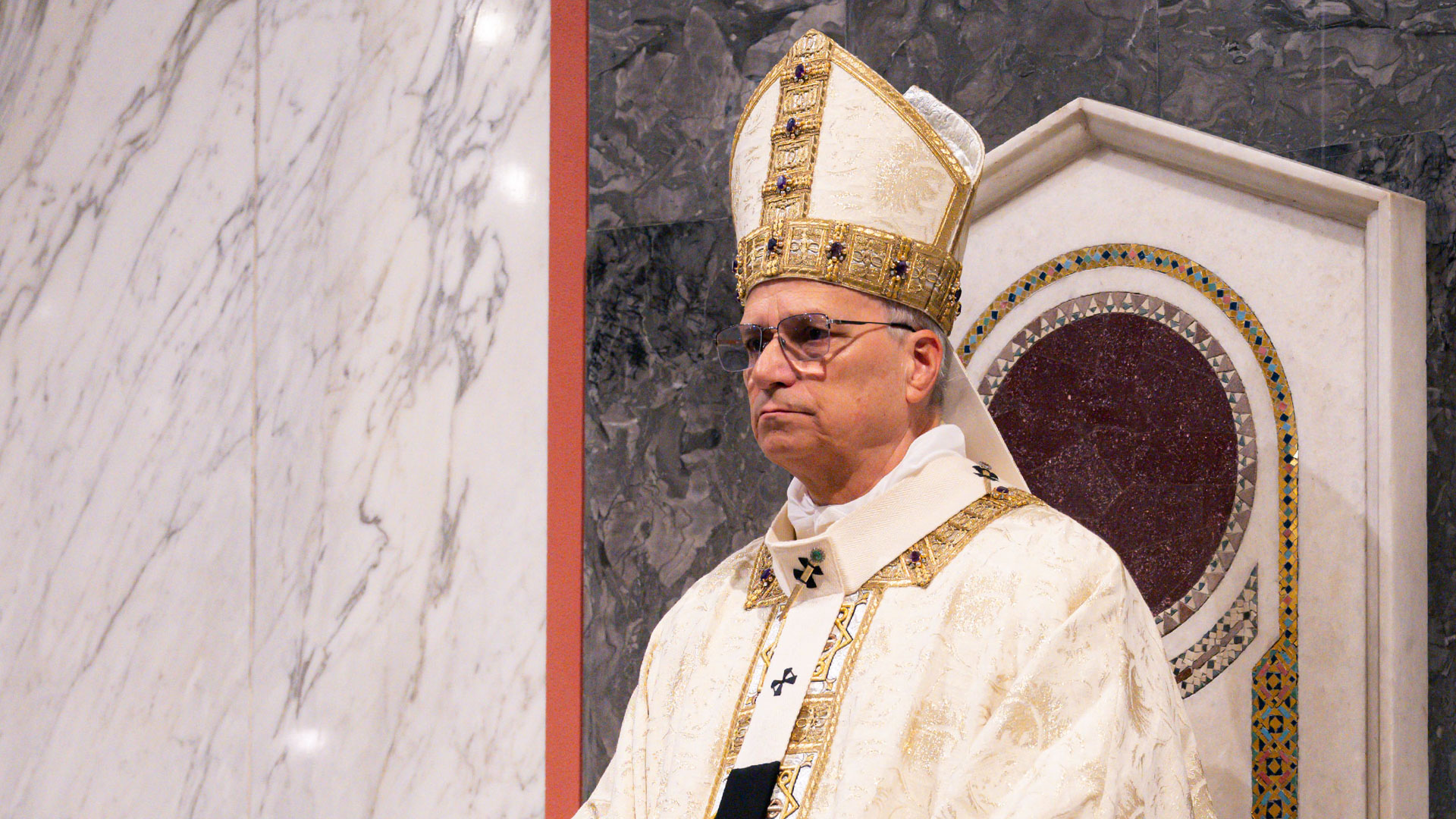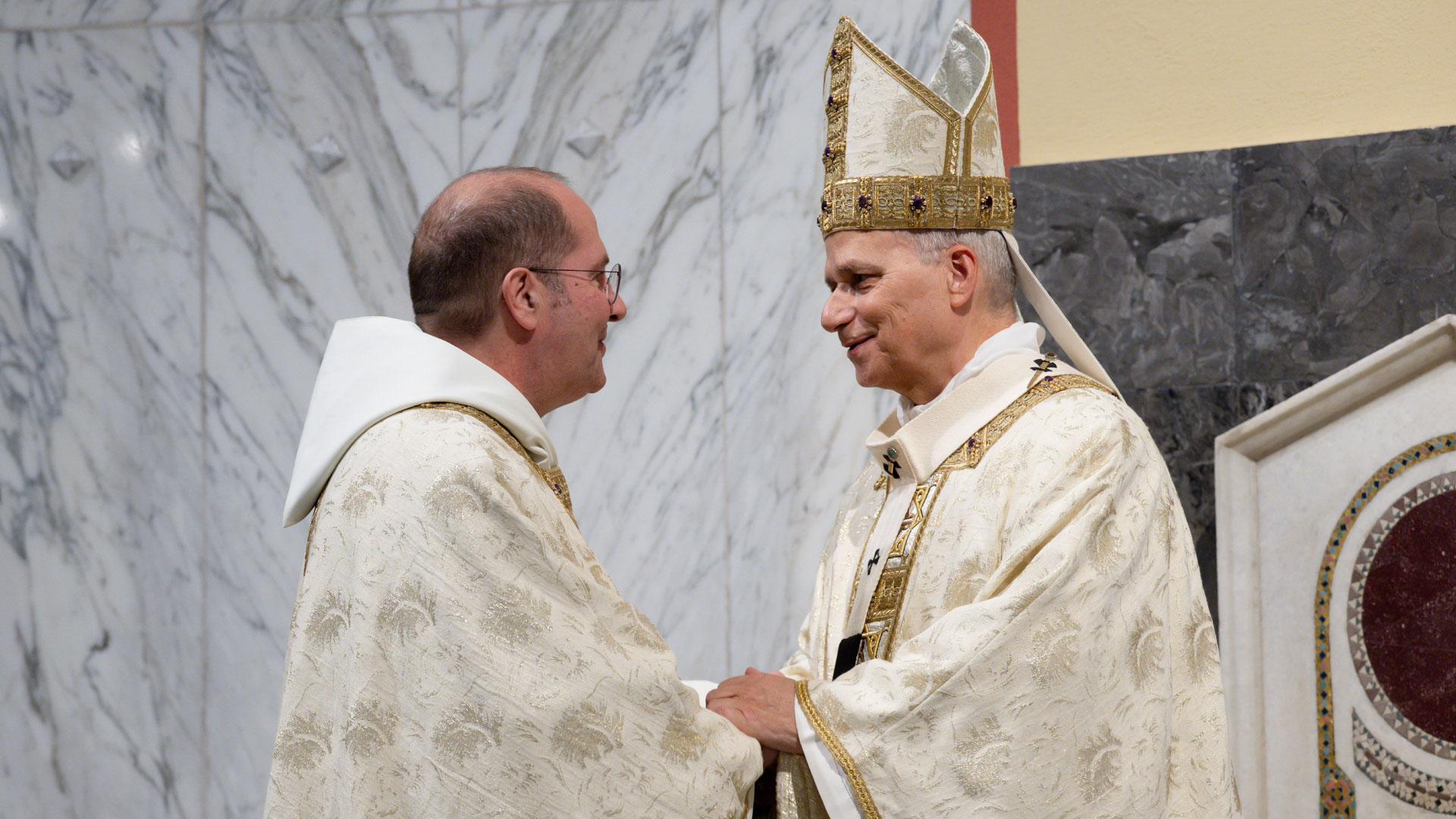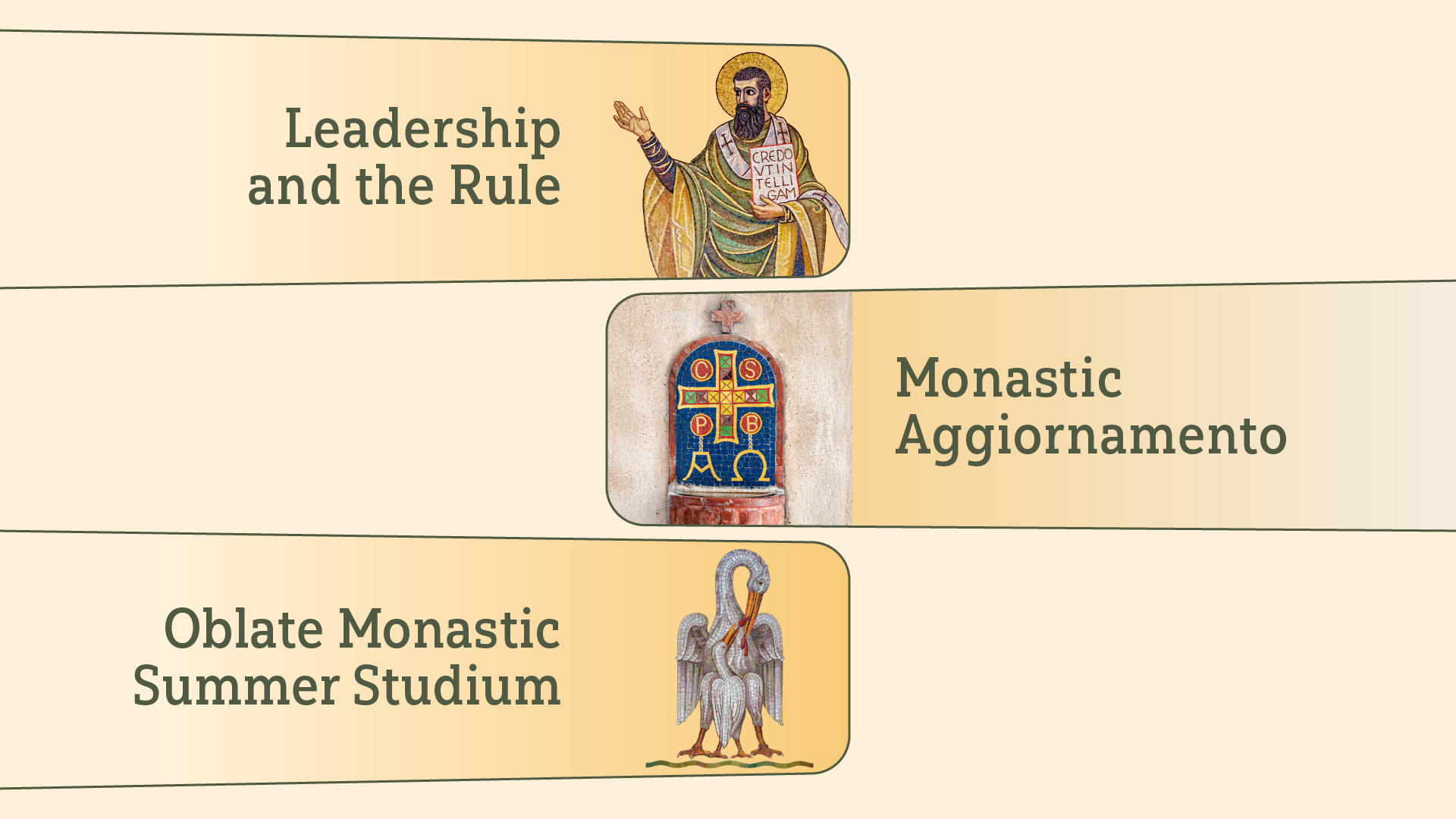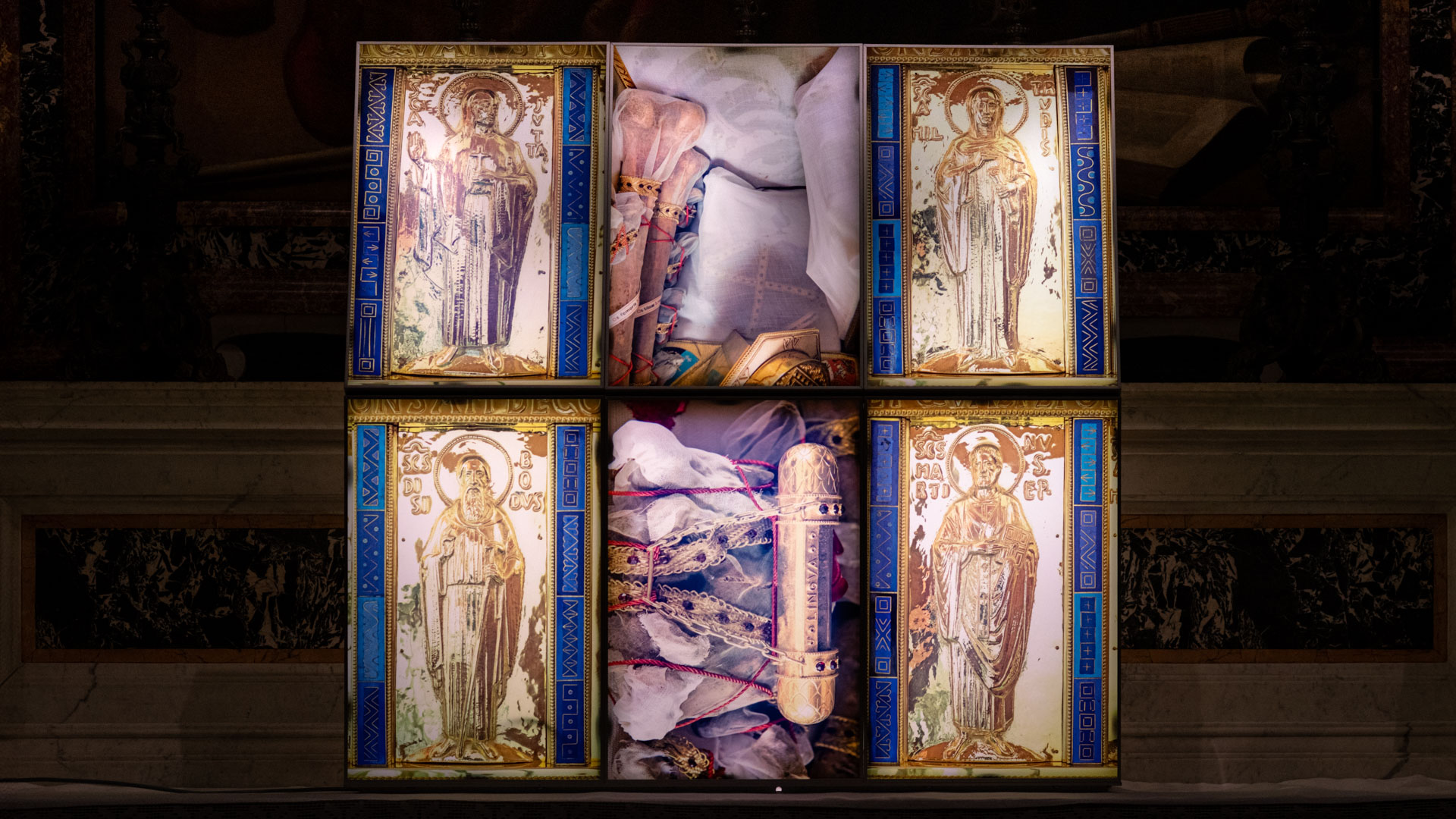Notes from the Aventine
In this edition of NEXUS, Abbot Primate Jeremias shares his take on some events at Sant’Anselmo and in our Benedictine Confederation. He appreciates a recent letter of the Holy Father and reflects about the places to which we Benedictines are bound.
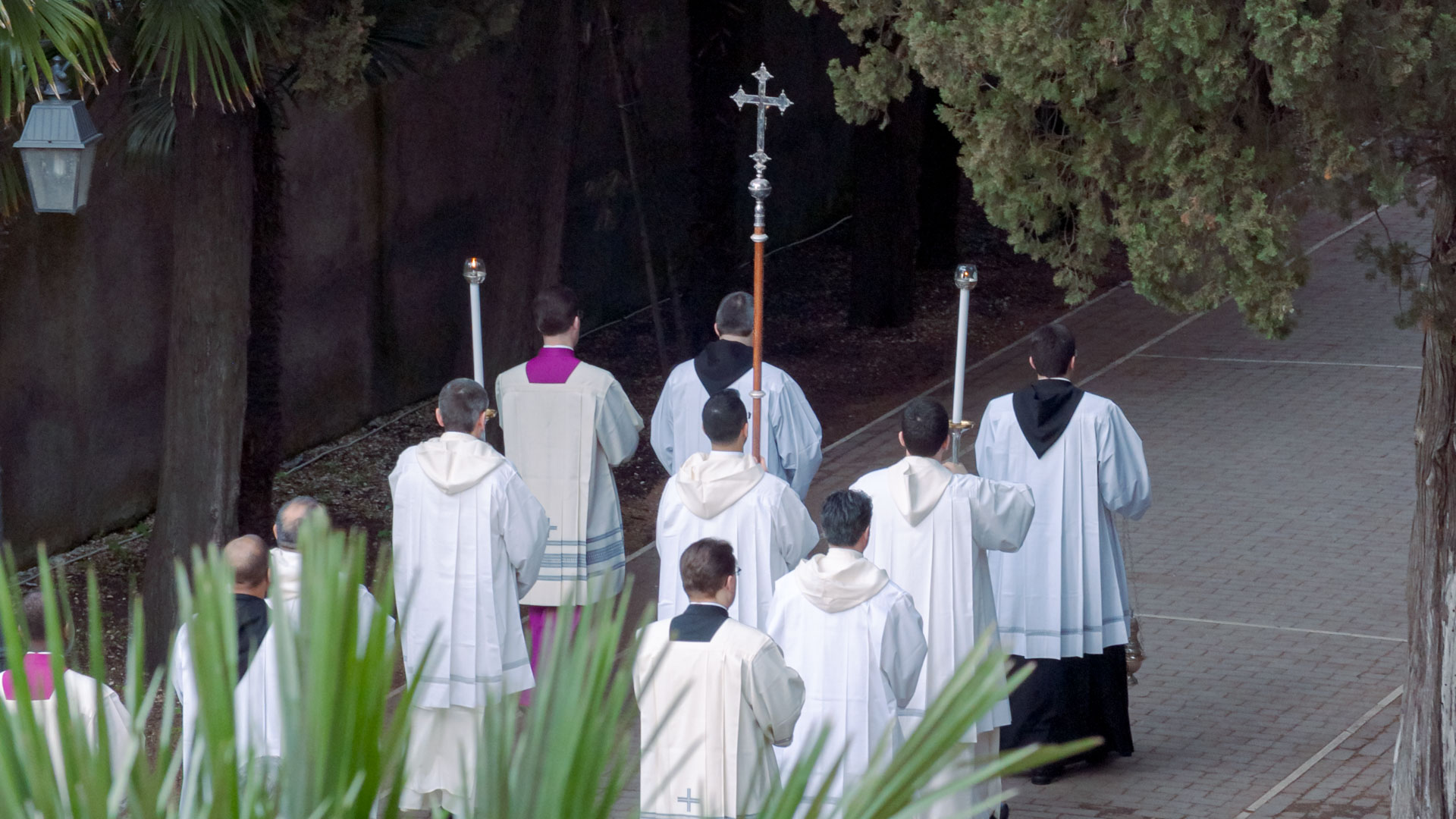
9 March 2025
Ash Wednesday is always a big day at Sant’Anselmo. Usually, the Pope comes here together with many dignitaries. After a short prayer, they together with the Dominicans and our Anselmian community process to Santa Sabina where the eucharist is celebrated and the ashes are given. This year it was overshadowed by the very serious illness of the Holy Father. Cardinal De Donatis replaced Pope Francis and gave out the homily. It was a very Roman event, with great solemnity, many senior clerics and some beautiful music. More profane thoughts must have come to many, especially when seeing all the Cardinals: would they come together again in this pontificate? Was the next pope here today? To his credit, the Cardinal who presided the mass, through his personality and way of celebrating mass, gave warmth to the rite and guided our prayers also to our ailing pontiff.
From the Gemelli hospital, a few days earlier, we received a message addressed to a group from our Pontifical Institute of Liturgy. Pope Francis had meant to receive a group of Masters of Ceremonies from all over the world. That was not possible, but he did send us the speech which he would have given, with the memorable byline “Gemelli Policlinic, 26 February 2025”. In it, he emphasized the pastoral importance of a litugy well-celebrated. More details here.
While praying for and worrying about the pope, we received the news that Mother Maíre (pronounced Moira) Hickey OSB had died. She was an Irish nun, an abbess in Germany, and a global leader of Benedictine Women as the first moderator of the CIB. After her resignation as abbess of Dinklage (Germany) she took over the fragile community of Kylemore (Ireland) and gave it a new lease on life. Her life reminds me of the great Irish monastic saints, straddling countries and cultures, steadfast and prophetic. She was buried in Kylemore on 1 March. Sr Lynn McKenzie, her second successor at the helm of the CIB, contributed an obituary to OSB DOT ORG.
My own life was rather busy. High points were trips to India and to the USA. The Indian-Sri Lankan Benedictine Federation which by my count comprises exactly 100 monastic communities, celebrated its golden jubilee. There were glorious celebrations, but also discussions on serious topics. There is a very healthy cooperation among these many communities which belong to many different congregations but share the very special cultural background of this vast subcontinent.
The US abbots and priors invited me to attend their annual workshop which took place at St Joseph’s Abbey, near New Orleans. They allowed me to share developments of our Confederation and at Sant’Anselmo, and also gave me some feedback in view of the 2028/29 jubilee when we will commemorate 1500 years since the foundation of Monte Cassino. I was greatly encouraged by the strong support for Sant’Anselmo. I firmly believe that our Roman hub becomes more important at a time when global networks are coming under increasing strain, and I felt that this was shared by our American brethren. That same support was given very palpably when I met with the board of the St Benedict Education Foundation who every year make a very generous contribution towards our academic activities. More details here.
I realize, as did my predecessors, that these large gatherings of abbots are very important for keeping us all connected. For the remainder of this year I have scheduled encounters with Italian abbots and Italian abbesses, with the German-speaking abbots, with EMLA in Brazil, the Benedictines of East Asia in Vietnam and with several general chapters. As my presence in Sant’Anselmo is also required, I will not be able to accept many more invitations for this year, and even the next one is filling up already. I hope for your understanding.
We Benedictines are a big family spread across the globe. We are also a network of "places". I recall Michael Casey writing about the amor loci, the love of place as something typically Benedictine. A famous jubilee publication about our monasteries that came out in 1980 and then again in 2000 was called “Loci ubi Deus quaeritur” – Places where God is Sought. We Benedictines, more than almost any other religious, I believe, are tied to places, in virtue of our vow of stability, but also because there is a sensual quality to our life that wants to transform and make beautiful the world around us. As many of you know, there is also a danger there. Monks can get lost in aesthetics. Umberto Eco sketched a caricature of this in the abbot of the Name of the Rose who waxes lyrically about gemstones. Our challenge is to seek and create beauty that does not just satisfy and entice, but that also leads us beyond, hints at a greater beauty that is a gift. Or grace. When this happens than our monasteries become places of hope.
Generally, the structure of our Catholic Church is envisioned as territorial. We have the global hierarchy, covering nations and ecclesiastical provinces and dioceses, all the way down to deaneries and parishes. It is a great system, although it shows strain in some regions where the territorial cover is no longer quite working, both for lack of priests, but also because people prefer to choose more freely where they live their faith. I wonder if in future "places" will play more of a role than territorial structures: significant churches, holy sites, shrines and monasteries where Christians can physically connect with spiritual realities and communities. In this Holy Year 2025 the entire church is on a pilgrimage of hope. Let us be part of this pilgrimage, but let’s also offer our houses as resting places on this pilgrimage. Monasteries should be places where that hope can be felt that gives us the courage to go beyond.
I conclude these notes with a few practical hints.
- NEXUS is meant for all members of our family. Please do not hesitate to forward this to others in your community, or superiors who for some reason or other are not yet on our mailing list. Every Benedictine can subscribe to this here.
- Sant’Anselmo is almost full. If you are planning to send a student here for the academic year 2025/2026 which starts in October, you should apply immediately to our prior Fr Brendan at priore@anselmianum.com. More information here.
- This summer we will offer another Monastic Summer Studium. It is a three-week program that combines a stay in Rome with intellectual and monastic stimulation. It is a great and rather affordable sabbatical program. More information here.
May you all have a blessed Lent that prepares you for a joyful Easter!
Very fraternally from the Aventine
Jeremias Schröder OSB
Abbot Primate

